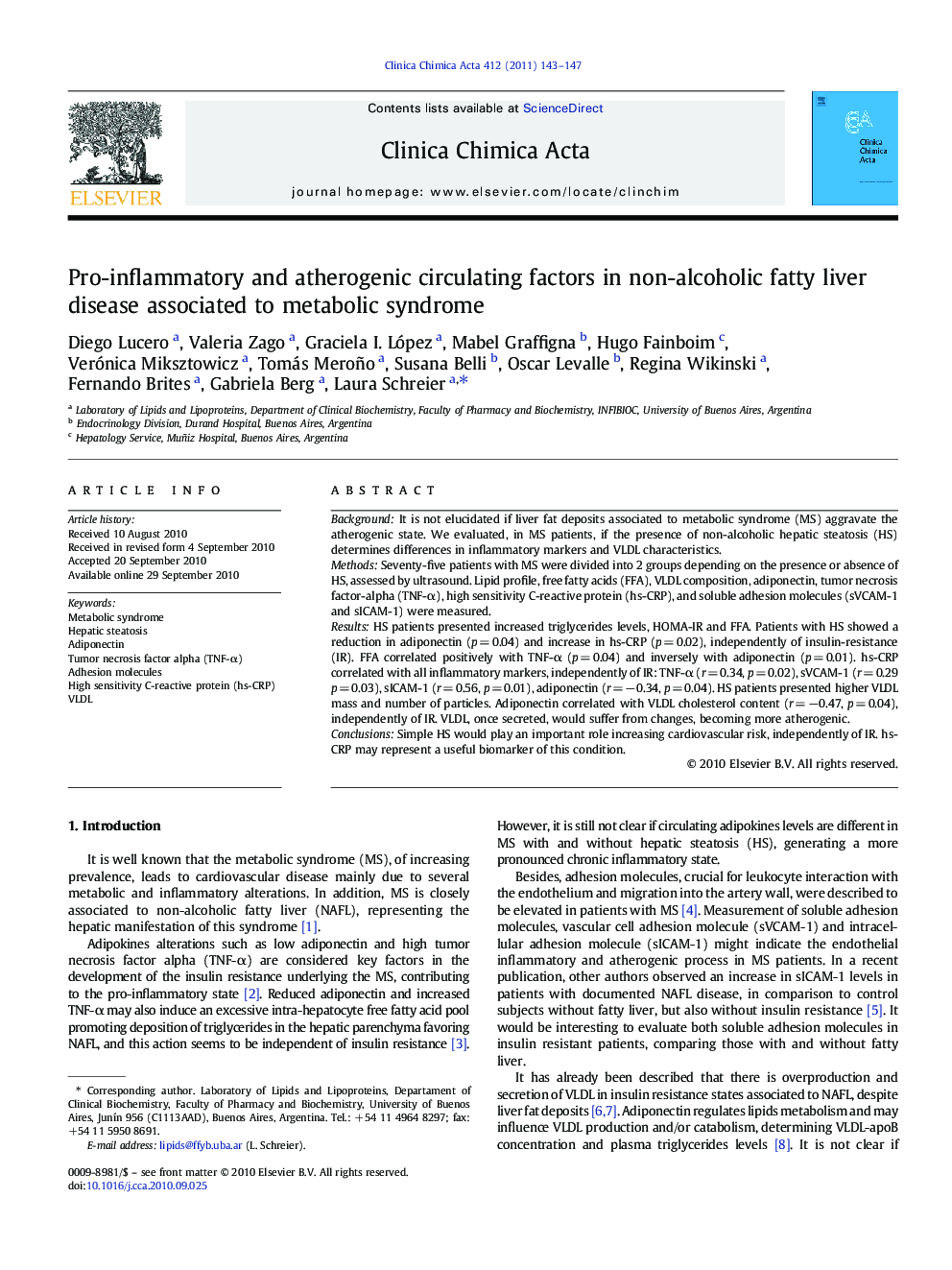| کد مقاله | کد نشریه | سال انتشار | مقاله انگلیسی | نسخه تمام متن |
|---|---|---|---|---|
| 1965650 | 1538708 | 2011 | 5 صفحه PDF | دانلود رایگان |

BackgroundIt is not elucidated if liver fat deposits associated to metabolic syndrome (MS) aggravate the atherogenic state. We evaluated, in MS patients, if the presence of non-alcoholic hepatic steatosis (HS) determines differences in inflammatory markers and VLDL characteristics.MethodsSeventy-five patients with MS were divided into 2 groups depending on the presence or absence of HS, assessed by ultrasound. Lipid profile, free fatty acids (FFA), VLDL composition, adiponectin, tumor necrosis factor-alpha (TNF-α), high sensitivity C-reactive protein (hs-CRP), and soluble adhesion molecules (sVCAM-1 and sICAM-1) were measured.ResultsHS patients presented increased triglycerides levels, HOMA-IR and FFA. Patients with HS showed a reduction in adiponectin (p = 0.04) and increase in hs-CRP (p = 0.02), independently of insulin-resistance (IR). FFA correlated positively with TNF-α (p = 0.04) and inversely with adiponectin (p = 0.01). hs-CRP correlated with all inflammatory markers, independently of IR: TNF-α (r = 0.34, p = 0.02), sVCAM-1 (r = 0.29 p = 0.03), sICAM-1 (r = 0.56, p = 0.01), adiponectin (r = −0.34, p = 0.04). HS patients presented higher VLDL mass and number of particles. Adiponectin correlated with VLDL cholesterol content (r = −0.47, p = 0.04), independently of IR. VLDL, once secreted, would suffer from changes, becoming more atherogenic.ConclusionsSimple HS would play an important role increasing cardiovascular risk, independently of IR. hs-CRP may represent a useful biomarker of this condition.
Journal: Clinica Chimica Acta - Volume 412, Issues 1–2, 14 January 2011, Pages 143–147